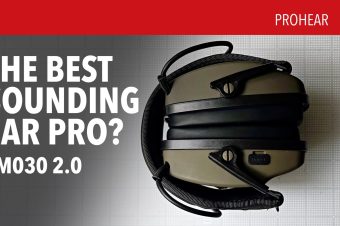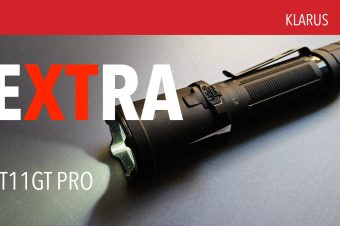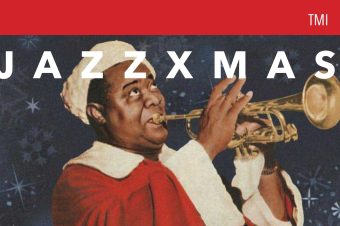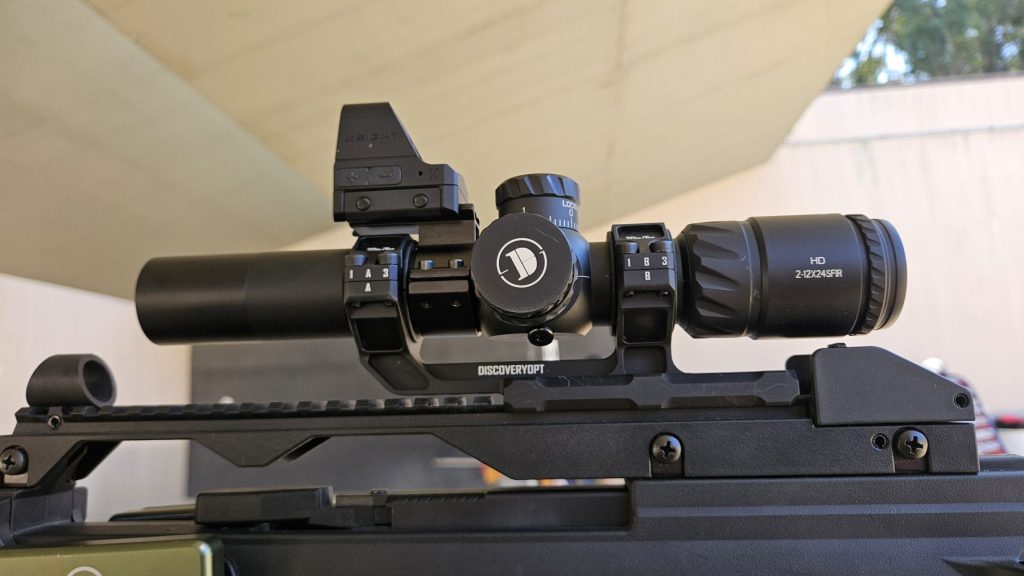
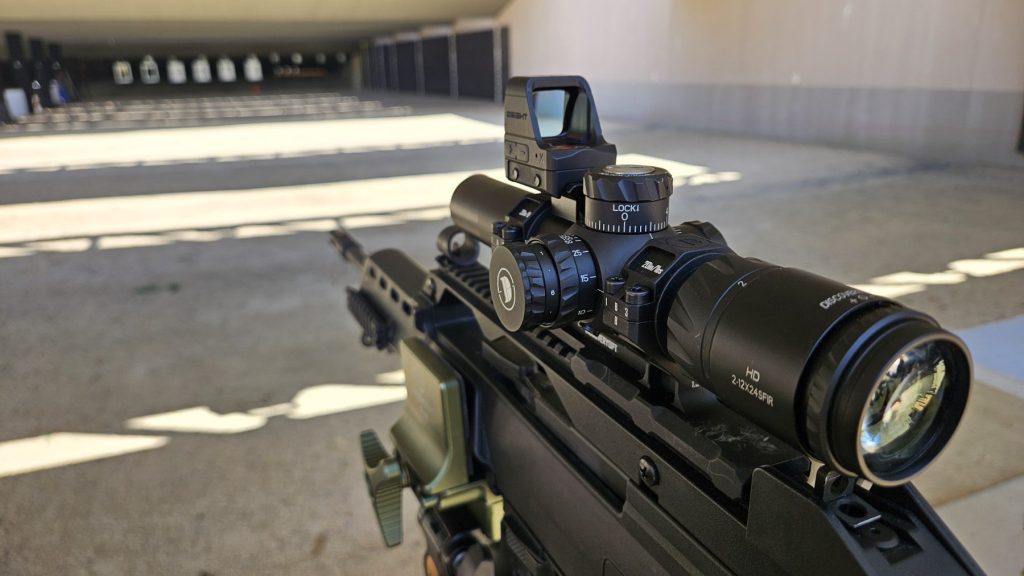
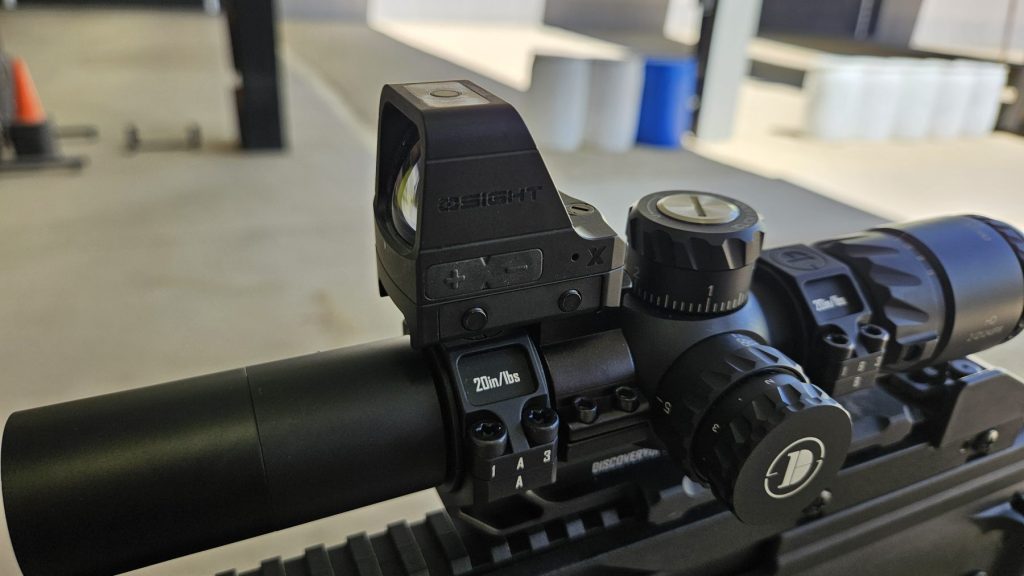
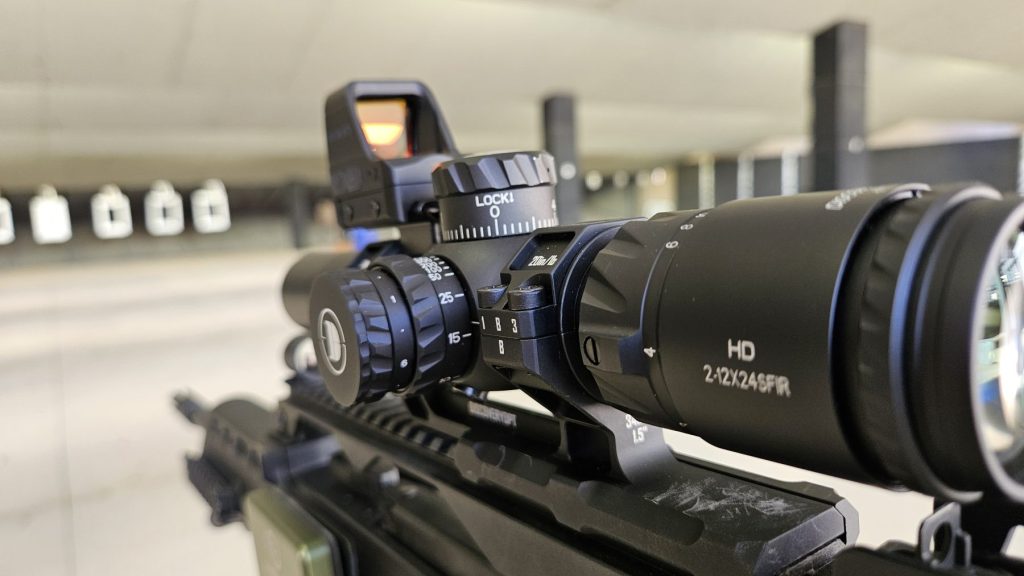
A few months ago, I tested and reviewed the Discovery Optics HD MVPO 2-12×24 and thought it was a great general-purpose optic, whose only shortcoming was its usability at CQB distances due to its reticle and lack of daylight-bright illumination. Earlier this year, I also tested the excellent new OSight X multi-reticle pistol reflex sight. I wondered if both of these could be paired together to make an ideal combination sighting system.
I bought a low-cost piggy-back mount that is a scope ring with a small Picatinny rail. I attached this just forward of my turrets to allow me enough space to manipulate my elevation without obscuring the turret. Using an RMR/Picatinny adapter, I mounted the OSight X atop the scope. An added benefit was that the combo was actually lighter than most 1-10x LPVOs.
High-power optics are great for general-purpose use and hunting, but generally poor at distances closer than 50 yards. Iron sights and red dots are excellent for fast target engagement, but are limited by a shooter’s naked eyesight. A number of solutions have been invented to bridge the gap: LPVOs, low-power prism optics, red dot magnifiers, and piggy-back/angled reflex mounts.
For a practical test, I fielded this optical setup at a local falling plates match. I wanted to see if this setup was better than the LPVO I usually use to good effect. The first obstacle I had to overcome was that having a reflex atop my scope didn’t give me enough room in my rifle bag. I had to zip the bag, leaving the Osight X and cover poking out and exposed.
When shooting the red dot at closer distances of the match (30-45 yards), I utilized a heads-up shooting position. In theory, this is a major advantage in CQB threat environments as it affords a less obstructed peripheral view than an LPVO at 1x (and less visual distortion). But in practice, since the falling plate targets were always directly in front of me and there were no random threats that could pop up, the wider peripheral view was moot.
When I got to the 45-yard stage in the match, I found that the red dot suffered due to my aging vision and the size of the dot obscuring the 8″ targets at this distance. I switched to the MPVO at 2x, which was better than the red dot at this distance, but it lacked a bright enough reticle illumination in the variable lighting conditions.
In theory, this reflex/MPVO combo should have been a great setup, but in practice, it was far from perfect. Admittedly, my performance could be improved with further practice, but its advantages aren’t as significant compared to a traditional LPVO for CQB and action shooting matches. Adding a reflex sight to any long-range optic would be helpful as a backup sight, but with the trade-off of extra bulk and complexity.
BUY
Official Website: https://discoveryopt.com/ (10% Discount Code: Moondog)
Amazon: https://amzn.to/4ofFcnH (10% Discount Code: MOONDOG2A)



